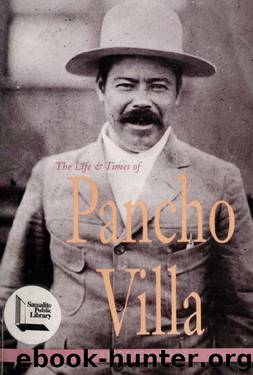Pancho Villa by Friedrich Katz

Author:Friedrich Katz [Katz, Friedrich]
Language: spa
Format: epub
Tags: Villa, Pancho, -- 1878-1923, Social movements -- Mexico -- History., Mexico -- History -- Revolution, 1910-1920., Chihuahua (Mexico : State) -- History.
Publisher: Ediciones Era
Published: 1998-02-15T07:00:00+00:00
CHAPTER TWELVE The New Civil War in Mexico
Villismo on the Offensive
The Meeting of Villa and Zapata
As in the history of most revolutions, the bloodiest phase of the Mexican Revolution occurred not when revolutionaries were fighting the old regime but when they began to fight one other. That was no coincidence. In most revolutions the adherents of the old regime tend to be a minority supported by some segments of the old upper classes and foreign allies. The rival factions within the revolutionary movement, by contrast, have a mass following, and their lead ers tend to be highly capable, since what they have achieved has generally been through their own talents, be they military or political, and through charismatic appeal rather than through family connections or birth. In the eyes of Robespierre, Danton was infinitely more dangerous than Louis XVI had ever been. In Stalin’s Russia, Trotskyists frequently suffered a worse fate than those who had fought in the White armies against the Bolsheviks during the civil war. In the new civil war that now engulfed Mexico, revolutionaries would at times deal far more harshly and brutally with their former allies than they did with the federal commanders who had supported Huerta, many of whom were amnestied after their final defeat.
There were other differences between this new interrevolutionary conflict and the former struggle of all the revolutionary factions against Huerta. In 1913—14, when they fought against the federal army, revolutionary volunteers confronted mostly unwilling, forcibly impressed conscripts. This time volunteer would fight mostly against volunteer. In the long-drawn-out struggle against Huerta, very few leaders or units switched sides, although individual soldiers from the federal army sometimes deserted to the revolutionaries, and few captured officers, when faced with the alternatives of joining the revolutionaries or facing a firing squad, would have chosen to be executed in order to prove their loyalty to Huerta. In the interrevolutionary wars, switching of allegiances was a frequent occurrence, which often depended on personal decisions by leaders or on the perception of who would finally win.
In the war against Huerta, the revolutionaries to a very large degree could take popular support for granted. Their main propaganda efforts in fact were directed less at Mexico than at the United States, from which they hoped to obtain arms, ammunition, and diplomatic support. This time the revolutionaries, and particularly the weaker Carranza faction, were forced to carry out a much larger propaganda and political mobilization in order to gain popular support.
When hostilities between the revolutionary factions broke out in late 1914, most observers were convinced that Villa would soon and easily triumph. This expectation was more than confirmed by his seemingly irresistible offensive in the first weeks after the outbreak of the civil war. His first important decision was to order his troops to march upon Mexico City, so that the Convention could assume control of the country in both real and symbolic terms. The advance proceeded without difficulty. The Carrancista garrisons along the way, belonging mainly to Pablo Gonzalez’s Army of the Northeast, were swept aside.
Download
This site does not store any files on its server. We only index and link to content provided by other sites. Please contact the content providers to delete copyright contents if any and email us, we'll remove relevant links or contents immediately.
| Afghan & Iraq Wars | American Civil War |
| American Revolution | Vietnam War |
| World War I | World War II |
Waking Up in Heaven: A True Story of Brokenness, Heaven, and Life Again by McVea Crystal & Tresniowski Alex(37639)
Empire of the Sikhs by Patwant Singh(22959)
We're Going to Need More Wine by Gabrielle Union(18950)
Hans Sturm: A Soldier's Odyssey on the Eastern Front by Gordon Williamson(18453)
Leonardo da Vinci by Walter Isaacson(13144)
The Radium Girls by Kate Moore(11896)
Tools of Titans by Timothy Ferriss(8183)
Educated by Tara Westover(7915)
How to Be a Bawse: A Guide to Conquering Life by Lilly Singh(7360)
Permanent Record by Edward Snowden(5717)
The Last Black Unicorn by Tiffany Haddish(5547)
The Rise and Fall of Senator Joe McCarthy by James Cross Giblin(5214)
Promise Me, Dad by Joe Biden(5074)
The Wind in My Hair by Masih Alinejad(5022)
A Higher Loyalty: Truth, Lies, and Leadership by James Comey(4820)
The Crown by Robert Lacey(4709)
The Iron Duke by The Iron Duke(4269)
Joan of Arc by Mary Gordon(4000)
Stalin by Stephen Kotkin(3864)
